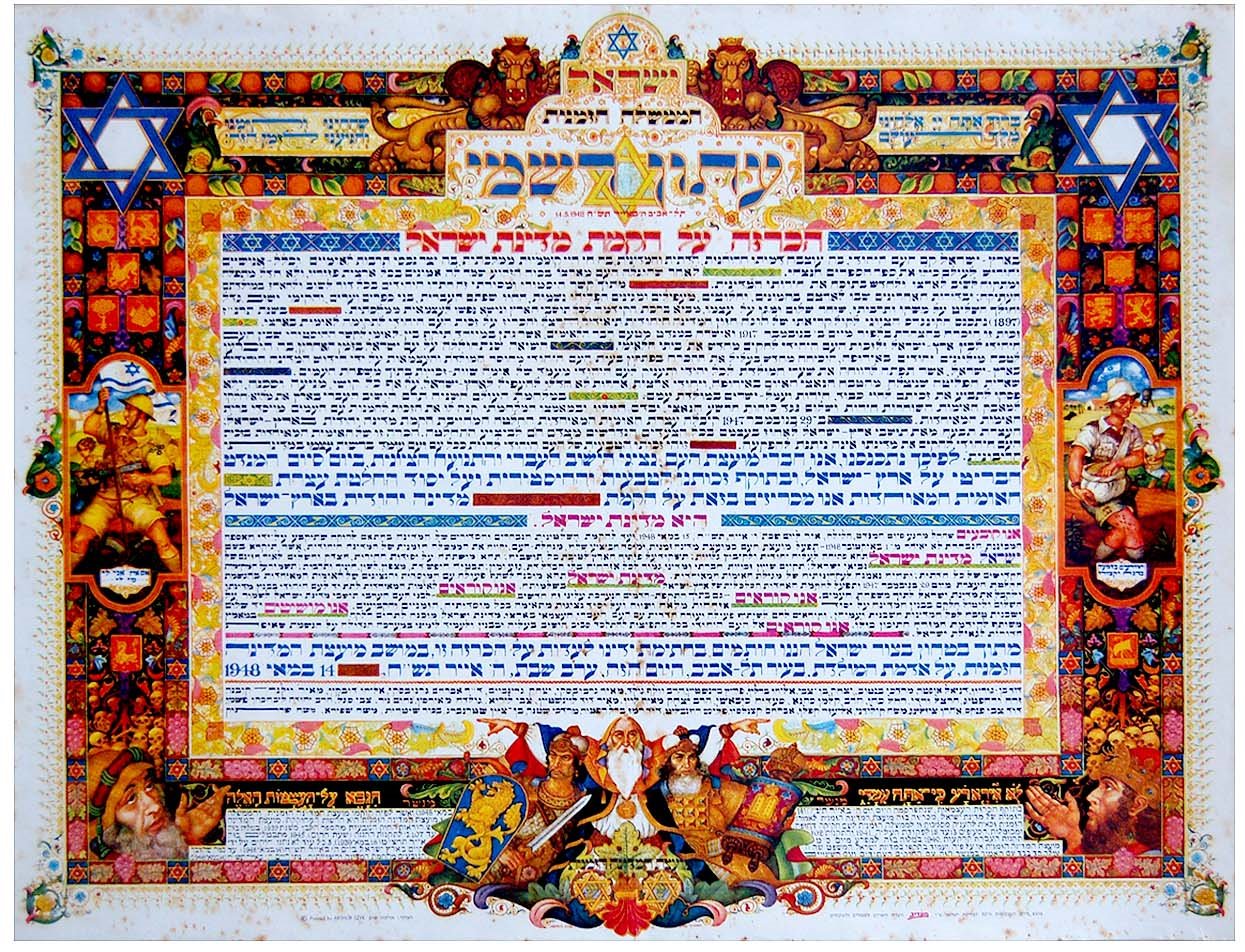בסיעתא דשמיא | ||
☰︎ Menu | 🔍︎
Search // Main //
👂︎ Public Readings, Sources, and Cantillation // Festival & Fast Day Readings // Readings for Civic Days on Civil Calendars // Yom ha-Atsma'ut Readings 
The thirtieth chapter of Jeremiah is exceedingly appropriate for Yom ha-Atsma’ut, considering its emphasis on returning from exile and the importance of self-rule. It strikes me as one of the most Zionist (with a capital Z) chapters in the entirety of Neviïm. . . . 💬 סדר לקריאת מגילת העצמאות | The Declaration of Independence of the State of Israel (1948), a service for its reading on Yom ha-Atsma’utJews have read sacred texts to commemorate miracles of redemption for a long time. Purim has Megilat Esther. Many communities read Megilat Antiochus or Megilat Yehudit for Ḥanukkah. But to many modern Jews, the most miraculous redemption in recent history was the founding of the state of Israel, as we commemorate on Yom ha-Atsma’ut. Like Purim, the story of the founding of Israel was entirely secular on a surface level, with no big showy miracles like a sea splitting or a mountain aflame. Like Ḥanukkah, a Jewish state in the Land of Israel won its independence against mighty forces allied in opposition. But we don’t have a megillah to read for Yom ha-Atsma’ut. Or do we? Just as Megillat Esther is said to be a letter written by Mordekhai to raise awareness of the events of Shushan, so too does the Israeli Scroll of Independence, Megilat ha-Atsma’ut, raise awareness of the events of the founding of the State of Israel. In this vein, I decided to create a cantillation system for Megilat ha-Atsma’ut. Ta’amei miqra were chosen attempting to follow Masoretic grammatical rules – since modern Hebrew has a different grammatical structure, the form is somewhat loose. Because of the thematic similarities to Purim, I chose Esther cantillation for the majority of the text. Just as some tragic lines in Esther are read in Eikhah cantillation, some lines regarding the Shoah or bearing grim portents for the wars to follow are to be sung in Eikhah cantillation. And the final phrases of chapters II and III are to be sung in the melody for the end of a book of the Ḥumash, or the Song of the Sea melody. They can be done in a call-and-response form, with the community reading and the reader repeating. . . .
Stable Link:
https://opensiddur.org/index.php?cat=3022 Associated Image:
 Illustration of the Declaration of Independence of the State of Israel by Arthur Szyk (1948)(This image is set to automatically show as the "featured image" in category pages and in shared links on social media.) Illustration of the Declaration of Independence of the State of Israel by Arthur Szyk (1948)(This image is set to automatically show as the "featured image" in category pages and in shared links on social media.)
Terms of Use:
Be a mentsch (a conscientious, considerate person) and adhere to the following guidelines:
Additional Notes:
Support this work:
The Open Siddur Project is a volunteer-driven, non-profit, non-denominational, non-prescriptive, gratis & libre Open Access archive of contemplative praxes, liturgical readings, and Jewish prayer literature (historic and contemporary, familiar and obscure) composed in every era, region, and language Jews have ever prayed. Our goal is to provide a platform for sharing open-source resources, tools, and content for individuals and communities crafting their own prayerbook (siddur). Through this we hope to empower personal autonomy, preserve customs, and foster creativity in religious culture. If you like what you've found here, please help keep our project alive and online with your financial contribution.
ויהי נעם אדני אלהינו עלינו ומעשה ידינו כוננה עלינו ומעשה ידינו כוננהו "May the pleasantness of אדֹני our elo’ah be upon us; may our handiwork be established for us — our handiwork, may it be established." –Psalms 90:17
| ||
| Sign up for a summary of new resources shared by contributors each week
  |